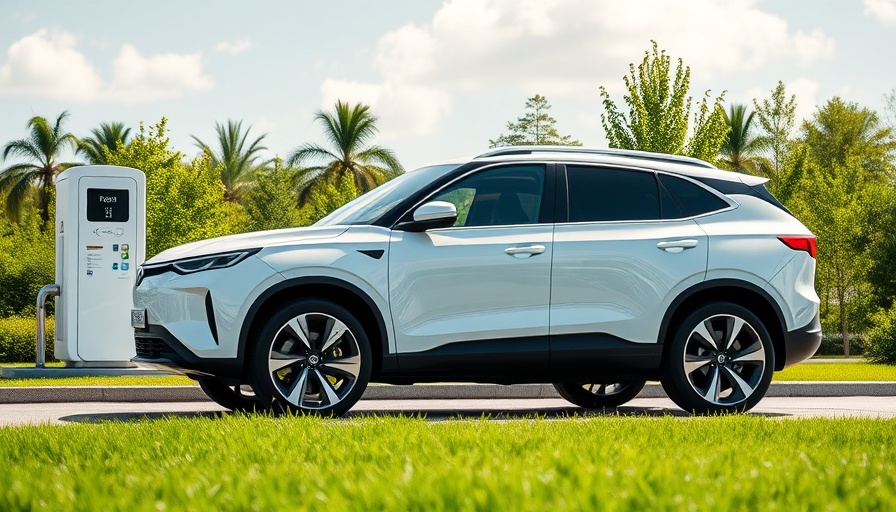
The Electric Evolution of the Corvette: A Paradigm Shift for Sports Cars
Chevrolet is making waves in the automotive world with its radically elegant California Corvette Concept, a vehicle that symbolically sheds the traditional V8 backbone for an all-electric future. Uncovered by GM's Advanced Design Studio in Pasadena, this concept is not just a visual spectacle but a bold statement about the direction of performance vehicles in an increasingly eco-conscious world.
Reimagining the Icon: A Historical Perspective
The Corvette has long been celebrated as a symbol of American automotive prowess since its introduction in the 1950s. As we step into the 21st century, this shift towards electric power represents a significant pivot for the car that has been adored for its raw power and engine roar. The emphasis on sustainability, as reflected in the California concept, resonates with broader trends across the global auto industry, where manufacturers are increasingly challenged to innovate amid climate concerns and regulatory pressures.
Design Meets Functionality: Features of the California Corvette Concept
Sporting a striking new design, the California Corvette Concept embodies Corvette DNA through its sharp lines and mid-engine proportions. The canopy-top structure—a feature reminiscent of futuristic vehicles—facilitates an open-air experience, enhancing its appeal as a track machine.
Inside, the design goes beyond aesthetics. A bright red cockpit presents a driver-focused environment with a central screen and a two-handle steering layout that screams performance. The incorporation of a head-up display projects crucial information, all while a wall divides the seating arrangements, creating an immersive driver’s sanctuary. Clearly, this concept has been manufactured with precision and passion, aimed at enthusiasts and the futuristic performance community.
Challenging Traditions: Reactions from the Automotive Community
While the move towards electrification is met with some enthusiasm, it undeniably raises eyebrows among traditionalists who cherish the guttural growl of internal combustion engines. Brian Smith, director of GM Advanced Design Pasadena, noted, “We wanted to ensure that this concept was developed through that SoCal lens, but with a global and futuristic outlook.”
This statement embodies the duality GM envisions: maintaining the visceral thrill of driving while adopting the clean technology necessary for the modern age. Unlike conventional transmission systems, the California concept integrates an innovative T-shaped battery which not only optimizes aerodynamics but also sets a new benchmark in automotive engineering.
Performance Insights: The Future of Electric Muscle
Despite withholding specific performance figures, GM hinted at the potential of this vehicle through features designed for downforce, such as an active rear spoiler and rear air brake. This suggests a thoughtful approach to design that doesn't compromise on performance, prompting enthusiasts to wonder just how powerful the future EV models might be.
The growing emphasis on reduced environmental impact and noise might align with a larger segment of the population seeking thrilling vehicles that don’t pollute. Given the current climate crisis, the choice to sell electric vehicles increasingly dovetails with consumer demand for sustainability.
The Perfect Blend of Heritage and Future Trends
This convergence of tradition and innovation is not limited to Chevrolet. In fact, automakers globally are racing to redefine their identities in an EV-centric world. The question remains: how will performance metrics stack up against established giants in the automobile industry? Could we be witnessing the prototype for a new era of supercars designed not just for power but for planet health as well?
Global Perspectives: The Auto Industry Landscape
The California Corvette's unveiling comes at an interesting time for the automotive sector, where the landscape is dominated by established players in the market—companies like Tesla, Nissan, and Ford, who are leading the charge in electrifying their fleets. As trends shift toward electric options, it will be intriguing to see how GM positions itself within the largest automobile industry in the world.
Moreover, with technological advancements accelerating, the question arises whether electric powertrains can truly replicate the sensory experiences associated with traditional combustion engines. This transition represents both an opportunity and challenge for manufacturers worldwide in retaining their loyal customer bases while attracting new environmentally-conscious consumers.
Conclusion: Embracing Change in the Automotive World
As Chevrolet proceeds with its ambitious vision for the future of the Corvette, the California concept showcases a thrilling glimpse into the melding of performance and sustainability. Although designed merely as a study at this stage, it stirs enthusiasm and debate regarding the direction of sports cars and the larger auto industry.
In a world where efficiency and performance need to coexist harmoniously, innovations like the California Corvette Concept serve as a progressive beacon, encouraging drivers and manufacturers alike to embrace the changes ahead. As consumers, we have the power to demand vehicles that reflect our values—the time to explore and understand these advancements in the automotive realm is now.
 Add Row
Add Row  Add
Add 




Write A Comment